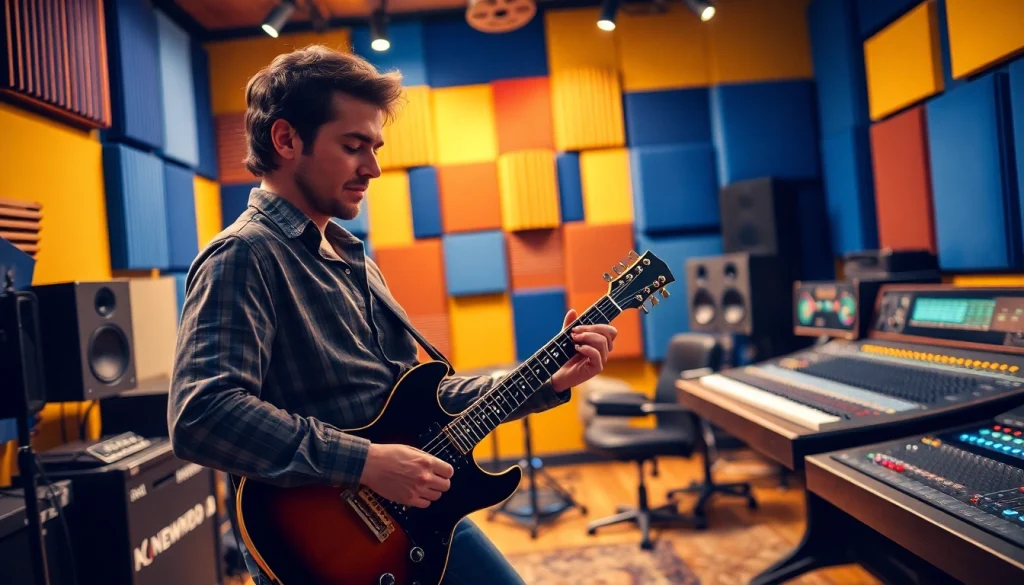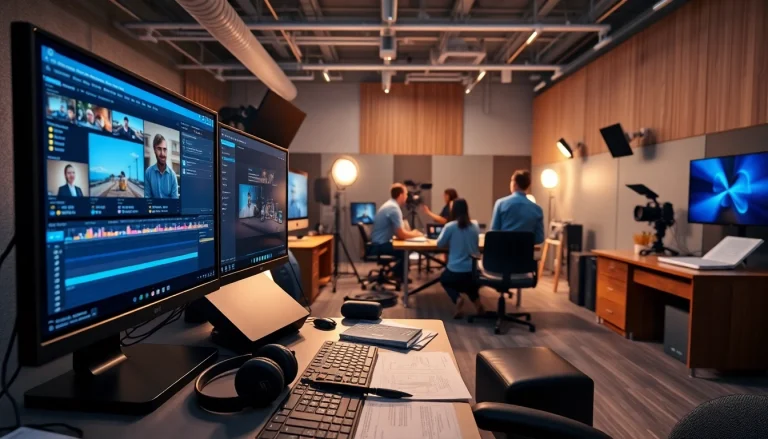
The Role of Innovation in the Music Industry
Innovation is a term that evokes curiosity and excitement across various sectors, and the music industry is no exception. It’s an ever-evolving landscape, characterized by rapid changes driven by technological advancements, creative collaborations, and shifting consumer preferences. As artists and industry professionals seek to differentiate themselves in a crowded marketplace, the importance of innovation becomes increasingly vital. This article will delve deeply into the multifaceted nature of innovation in the music industry, examining its historical roots, current trends, and future implications.
Defining Innovation in Music
At its core, innovation in music refers to introducing new ideas, methods, or products that enhance the way music is created, consumed, or experienced. This can range from the introduction of digital audio workstations (DAWs) that revolutionize music production to the emergence of streaming platforms that redefine music consumption. Innovation isn’t limited to technology; it also encompasses novel marketing strategies, fan engagement techniques, and distribution channels that affect how music reaches audiences and how artists connect with their fan bases.
Historical Examples of Innovation
Looking back, the music industry has been reshaped by numerous innovations:
- The Phonograph: Invented by Thomas Edison in 1877, the phonograph was the first device to record and reproduce sound, fundamentally changing how music was consumed.
- The Electric Guitar: Introduced in the 1930s, electric guitars expanded the possibilities of music genres, leading to the birth of rock and roll and transforming the music landscape.
- Digital Sampling: Used extensively in the late 20th century, sampling allowed artists to reuse and recontextualize existing sound recordings, leading to the rise of hip-hop and electronic music.
- The Internet and MP3 Format: The advent of the internet and MP3 technology in the 1990s facilitated music sharing and distribution, paving the way for platforms like Napster and, later, Spotify and Apple Music.
Each example illustrates how innovation has been pivotal in altering the trajectory of the music industry, creating new genres, and changing how we experience sound.
Current Trends Shaping the Future
As we look toward the future, several current trends signal the ongoing transformation driven by innovation:
- Artificial Intelligence (AI): AI is being used for everything from songwriting and producing to generating personalized music recommendations, providing artists and consumers with unique experiences.
- Virtual Reality (VR) and Augmented Reality (AR): These technologies are creating immersive concert experiences and unique promotional opportunities, allowing fans to engage with their favorite artists in entirely new ways.
- Blockchain Technology: Emerging as a solution for fairer revenue distribution, blockchain offers a transparent way for artists to monetize their work and connect directly with fans.
- Social Media and Viral Trends: Platforms like TikTok are influencing music trends and providing a launchpad for new artists, proving that social media innovation is a powerful tool in music marketing.
With these trends, the possibilities for innovation in music appear limitless, with implications not only for artists but for fans and industry stakeholders alike.
Understanding Different Types of Innovation
Technological Innovations in Music
Technological advancements continue to reshape the music industry in ways both large and small. From the introduction of MIDI (Musical Instrument Digital Interface) in the 1980s to the latest digital audio technologies, how music is created and produced has changed dramatically. Here are some notable technological innovations:
- Digital Audio Workstations (DAWs): Programs like Ableton Live and Logic Pro allow musicians to record, edit, and produce music digitally, removing many barriers to entry in music production.
- Streaming Technologies: Platforms like Spotify and Apple Music have not only transformed music consumption but also forced artists and labels to rethink their distribution strategies.
- Music Apps and Tools: Apps like BandLab and GarageBand enable budding musicians to create high-quality music from their smartphones, democratizing music creation.
These technological innovations empower musicians and offer listeners diverse and elevated experiences, showcasing the dynamic nature of the industry.
Innovative Approaches to Music Production
Beyond technology, innovative approaches to music production entrench creativity in the process:
- Lo-Fi Aesthetics: Embracing imperfections, lo-fi music champions authenticity, providing listeners with a sense of nostalgia and rawness.
- Remote Collaboration: The COVID-19 pandemic has accelerated remote collaboration, leading musicians to work together from different corners of the globe using collaborative software like Splice.
- Multigenre Fusions: Artists are increasingly blending genres to create unique sounds, pushing the boundaries of traditional music categories and attracting wider audiences.
These creative approaches not only yield new sounds but also foster a sense of community among artists and listeners, reinforcing the importance of innovation in music production.
Creative Collaborations: Merging Ideas
Collaboration has always been a cornerstone of the music industry, and innovative partnerships are breathing new life into music-making. Here’s how creative collaborations are facilitating innovation:
- Cross-genre Collaborations: Artists from different genres come together to create fresh sounds—think of collaborations such as Lil Nas X’s “Old Town Road,” which combined country and hip-hop for a groundbreaking hit.
- Transdisciplinary Collaborations: Musicians aligning with visual artists, choreographers, or technology innovators are creating immersive experiences that transcend traditional music presentation.
- Cultural Exchange: Artists engaging with influences from other cultures are enriching their music and broadening their appeal, as seen in artists like Rosalía, who blends flamenco with modern pop.
Through collaboration, artists can innovate by combining diverse influences, resulting in music that resonates with a broad audience while pushing creative boundaries.
Strategies to Foster Innovation
Encouraging a Creative Environment
Fostering innovation within the music industry begins by cultivating a creative environment. Here are some strategies that can help:
- Open Collaboration Spaces: Creating physical or virtual spaces where artists can collaborate freely enhances cross-pollination of ideas and promotes creativity.
- Access to Resources: Providing artists with access to tools, mentorship, and industry knowledge encourages experimentation without the fear of failure.
- Cultural Inclusivity: Embracing and celebrating diverse cultures within music can spark new ideas and approaches, enriching the overall creative process.
By establishing a supportive environment, music professionals may unleash unprecedented levels of innovation, resulting in impactful art.
Leveraging Technology for New Ideas
Artists and producers are increasingly relying on technology to spark new ideas and streamline collaboration:
- Cloud-based Platforms: Leveraging tools like Google Drive or Dropbox for collaboration allows artists to share projects seamlessly, facilitating constant communication and feedback.
- AI Tools: Programs like Amper Music and AIVA enable users to harness AI in creating music compositions, opening new avenues for artists to explore beyond their traditional boundaries.
- Virtual Reality Platforms: Exploring music in the realm of VR offers experiences that immerse fans or provide unique performance spaces, such as virtual concerts that aren’t bound by physical locations.
Technology, when leveraged effectively, can be a powerful catalyst for creative innovation in music production and performance.
Collaborative Projects and Workshops
Organizing workshops and collaborative projects is instrumental in fostering a culture of innovation:
- Industry Workshops: Music organizations can host workshops that focus on specific skills or trends, encouraging attendees to share their ideas and learn from one another.
- Community Collaborations: Collaborating with local community artists can yield fresh ideas while also supporting the growth of local music scenes.
- Online Hackathons: By hosting hackathons, artists can challenge themselves to create within confined timeframes, often leading to unexpected and innovative results.
Such collaborative initiatives can spark creative synergy, pushing artists to innovate and expand their horizons.
Measuring the Impact of Innovation
Analyzing Success Metrics
While fostering innovation is essential, measuring its impact is critical for continued growth in the music industry. Below are some ways to evaluate innovation effectiveness:
- Sales Metrics: Tracking album sales, streaming numbers, merchandise sales, and ticket sales can provide insight into how innovative approaches resonate with audiences.
- Engagement Levels: Monitoring social media interactions, streaming platform engagement, and fan feedback can gauge how well audiences respond to innovative projects.
- Critical Acclaim: Awards, nominations, and reviews can serve as barometers for assessing the artistic merit and impact of innovative works.
By employing varied success metrics, artists and industry stakeholders can better understand their innovation efforts and adapt accordingly.
Feedback Loops in Music Innovation
Implementing feedback loops helps industry professionals refine their innovative strategies:
- Surveys and Polls: Gathering input from fans and industry peers can provide valuable insights into public perception and areas for improvement.
- User-generated Content: Encouraging fans to share their interpretations or remixes can create a dialog between artists and their audience, leading to continuous innovation.
- Prototype Testing: Early testing of new music, concepts, or technologies with select audiences allows artists to refine their ideas based on real-world feedback.
Establishing these feedback channels is crucial for continuous growth and evolution in the music landscape.
Case Studies of Successful Innovative Artists
Examining case studies of innovative artists can provide valuable lessons and inspire others:
- Beyoncé: By releasing her self-titled album unexpectedly and creatively incorporating visual elements, Beyoncé set a new standard for album rollouts, demonstrating the power of surprise and multi-dimensional storytelling.
- Billie Eilish: With her distinctive sound and DIY approach to production, Eilish has redefined pop music norms, utilizing social media and collaborations with frequent partner Finneas to create a compelling narrative.
- Daft Punk: The duo’s innovative use of technology, particularly in live performances with robotic personas, has set them apart in electronic music, showcasing the potential of combining artistry with advanced digital tools.
These artists show how taking risks and embracing innovation can pay off tremendously, influencing not just their careers but the music industry at large.
Future Perspectives on Music Innovation
Emerging Technologies and Their Potential
The trajectory of music innovation is poised for further upheaval thanks to several emerging technologies:
- 5G Technology: With faster internet speeds, 5G can enhance live streaming quality, enable more interactive concert experiences, and fortify the consumption of high-fidelity music.
- Virtual Reality (VR) and Augmented Reality (AR): Continued advancements in VR and AR will offer new ways to experience music, from virtual concerts to enhanced music videos that draw viewers into immersive worlds.
- Data Analytics: As artists adopt data-driven decision-making, understanding audience behavior through analytics can help tailor music and marketing initiatives more effectively.
Innovations in technology will continue to expand what is possible in the music industry, creating fresh opportunities for creativity.
Preparing for Changing Consumer Preferences
As consumer preferences evolve, the music industry must continually adapt:
- Personalization: Consumers are looking for personalized experiences, whether through music recommendations, concerts, or exclusive content, necessitating a focus on tailored engagement.
- Sustainability: As awareness of environmental concerns rises, artists and labels are focusing on eco-friendly merchandise and sustainable touring practices that resonate with environmentally-conscious consumers.
- Health and Wellness Integration: The blending of music with health and wellness practices, such as sound therapy and wellness playlists, speaks to changing consumer behaviors and preferences for holistic experiences.
Staying attuned to these changes is vital for artists and music industry players to keep pace with consumer desires.
The Role of Globalization in Music Innovation
Globalization has had a profound impact on the evolution of music:
- Cultural Exchange: Increased access to diverse musical styles from around the globe has led to rich cross-cultural exchanges, fostering new genres, and encouraging artists to explore beyond their traditional sounds.
- Collaborative Platforms: Digital platforms enable connections between artists worldwide, facilitating collaborations that can blend various cultural influences.
- Global Audience Reach: Social media and streaming services allow artists to reach a more extensive international audience, amplifying their work beyond local markets and creating global followings.
The globalization of the music industry increases the significance of innovation, allowing artists to create music that transcends borders and resonates with a diverse audience.






